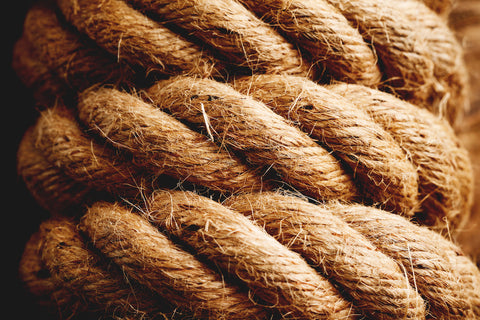Your Cart is Empty

The first European settlers in North America grew hemp more than three centuries ago. In fact, the colonial government paid farmers to grow the crop. Thomas Jefferson and George Washington, spoke about the importance of hemp. A crop that they themselves grew.
These early advocates knew that the plant could be a thriving and sustainable part of the North American economy. Yet, this fact got muddled sometime in the middle of the twentieth century. Drug laws and false science has ensnared the harmless and popular crop in a web of confusion and prohibition. Only now is the fog beginning to lift.
New York governor Andrew Cuomo recently pushed local lawmakers to pass a bill that would allow farmers to grow hemp in the state once again. "Industrial hemp has proven its potential, especially in the Southern Tier. And this legislation removes artificial barriers for growth," Cuomo said. He joins a long list of lawmakers, farmers, environmental advocates, and entrepreneurs from across the political spectrum who want to unleash the power of hemp.
We use hemp textiles in many of our Goose Organic products. Like organic cotton, hemp is a comfortable, durable fiber that is good for the environment. But it’s more than that, too. Hemp can actually save the world.

Let’s get this out of the way: No, it’s not marijuana. It will not get you high, no matter how much you smoke.
Well, that’s a whole other question. The United States outlawed hemp in the middle of the twentieth century. Through a series of legislative and publicity maneuvers. Including the Marijuana Tax Act of 1937 and the Comprehensive Drug Abuse Prevention and Control Act of 1970. There are many speculations on why the government outlawed the crop. Some say, powerful organizations targeted hemp. To keep it from competing with other fibers. Others say, people confuse hemp with marijuana. Either way, the plants removal was in conjunction with marijuana during the long War on Drugs.
Taxonomically speaking, the plant is close to identical to marijuana. Which makes the history of hemp so confusing. Both marijuana and hemp are varieties of Cannabis sativa. In short (you can read the longer version here), hemp is a low THC version of marijuana. Created to produce many seeds for food production. It has a thick, long stock for textile and composite material production. In fact, hemp cultivation is separate from marijuana. And has been, across the world for many centuries.
Evidence suggests that Hemp (Cannabis Sativa) originated in the steppes of Central Asia. In what is now Mongolia and Southern Siberia. For thousands of years, hemp traveled throughout Asia, Africa and Europe. It became a valued commodity for textiles, rope, food and medicine in most cultures it entered.
In Europe, hemp became particularly valuable for maritime vessels. Rope and sails required hearty, water-resistant materials to withstand years of use in the high seas. The Royal Navy of the British Empire was the most notorious naval force throughout the 17th, 18th and 19th centuries. They required significant amounts of hemp for the production of ships. Which is why early American colonist received such high pay to grow the crop.

In the 20th century, the utilization of hemp was for a wider variety of products. From Henry Ford’s car bodies to uniforms for soldiers during World War II. Ironically, the U.S. government suspended their campaign against the crop. To encourage it’s growth during this period. Hemp enthusiasts began to talk about beginning industrial production of hemp paper. The process of using discarded hemp cloth to make paper long before wood pulp. Had it not been for its criminalization, we could all be living in ‘hempcrete’ homes today!
In recent years, states have taken it upon themselves to challenge the federal prohibition on hemp farming. Many states have passed laws in compliance with the 2014 Farm Bill. Which states that hemp may be grown for research purposes and in pilot programs. In places like Colorado and Kentucky, we are witnessing some of the first hemp harvests in over half a century. Experimenting with this crop is exciting to modern farmers for many reasons.

Since hemp was outlawed, agricultural science has come a long way. If hemp was a successful crop before, it is a miracle crop now. Science has shown that hemp can not only be grown without pesticides, but it also heals the soil as it grows. It leaches out harmful toxins and heavy metals. Hemp plants put important nutrients back into the soil, making it an ideal rotation crop.
It’s an organic farmer’s dream. And, with modern technology, hemp can be more than shirts and paper.
A single hemp plant can provide seed for hemp protein powders. A woody stalk turned into ‘hempcrete’, and strong fibers made into ship sails. The CBD oil from the hemp flower used as medicine. Hemp fibers can even be used to make a graphene-like nanomaterial.
We at Goose Organic find it exciting to be part of the new movement for hemp in the United States. The possibilities for this amazing plant are endless! Sign up below to stay in the loop.